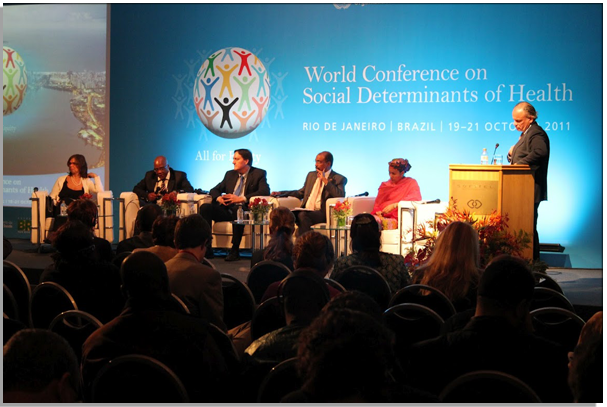Mirta Roses Periago
Director
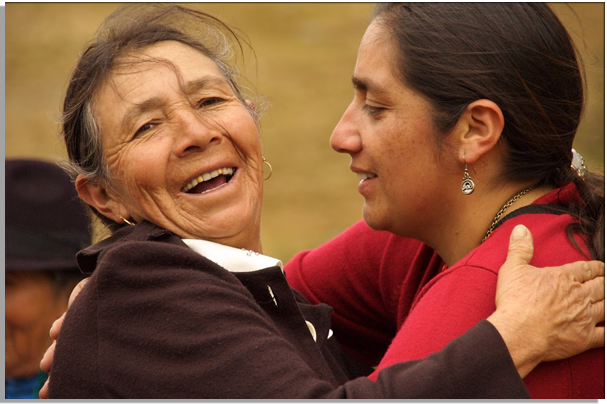 The first decade of the new millennium was a period of significant, if mixed, progress for health and development in the Americas. At the regional level, life expectancy gained 4 years between 2000 and 2010, rising from 72.2 to 76.2 years. Mortality fell 11%, despite (and certainly contributing to) a rapidly aging population.
The first decade of the new millennium was a period of significant, if mixed, progress for health and development in the Americas. At the regional level, life expectancy gained 4 years between 2000 and 2010, rising from 72.2 to 76.2 years. Mortality fell 11%, despite (and certainly contributing to) a rapidly aging population.
Despite the economic downturn toward the end of the decade, the number of people living in poverty in the Region declined by 44 million between 2002 and 2011, and the number living in extreme poverty fell by 27 million. This was largely the result of sustained economic growth during the earlier part of the decade, but it also reflected targeted anti-poverty policies pursued by a number of the countries.
In terms of political development, the positive trends of the 1990s carried over into the 2000s, with the continued consolidation of democracy and the rule of law, increased political and administrative decentralization, and greater citizen participation in local 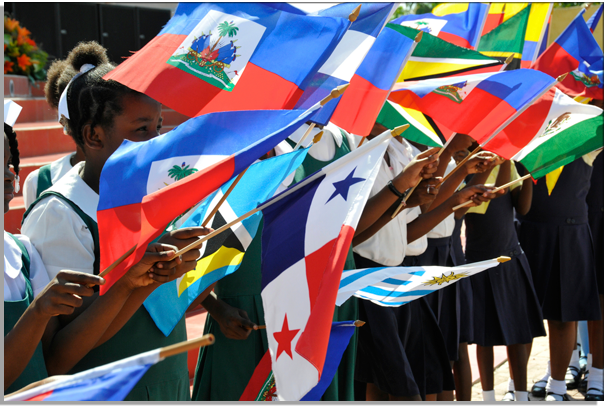 governance. Threats to democratic order did occur but were few and did not alter the regional pattern of deepening democracy. Indeed, Latin America and the Caribbean rated highest among developing regions on the Economist Intelligence Unit’s “Democracy Index” during this decade, behind only Europe and North America.
governance. Threats to democratic order did occur but were few and did not alter the regional pattern of deepening democracy. Indeed, Latin America and the Caribbean rated highest among developing regions on the Economist Intelligence Unit’s “Democracy Index” during this decade, behind only Europe and North America.
Contributing to these positive trends was the ongoing revolution in use of information technologies, which exponentially increased communication and information-sharing in countries. The growing use of Web-based and social media gave rise to new social as well as interest-based networks, including new “communities of practice,” many of which focused on issues related to health. These media have clearly helped mobilize and channel new and growing demands for social inclusion and participation and for accountability by governments, organizations, and corporations.
Although progress toward more democratic and participatory governance was made in many of the Region’s countries, others faced significant challenges in this regard, especially those most affected by the drug trade and organized crime. By the end of the decade, successes in controlling drug trafficking in countries such as Colombia and Mexico had the effect of shifting drug transit routes and related violence to other countries, particularly Central America. This shift focused new attention on the need for regional and subregional approaches to these problems and spurred calls to broaden the international policy debate to consider new options, including decriminalization and increased, innovative action on prevention and demand reduction in high-consumption areas such as Europe and the United States.
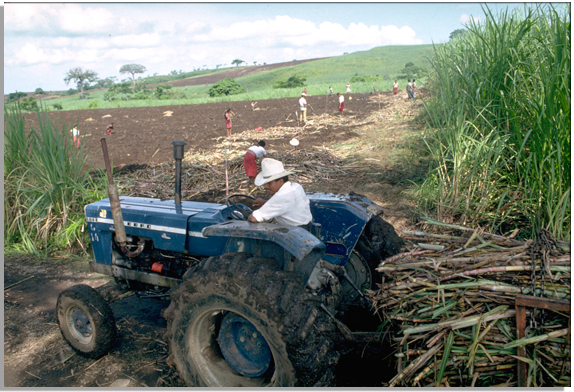 In economic terms, countries increased their participation in the global economy during the decade while continuing to pursue development models adapted to their own needs and realities. A particularly noteworthy trend was the continued advancement of regional and subregional integration. Established mechanisms such as the Southern Common Market (MERCOSUR), the Andean and Caribbean communities, and the Central American Integration System (SICA) were supplemented by new entities: the Union of South American Nations (UNASUR), the Community of Latin American and Caribbean States (CELAC), the Bolivarian Alliance for the Peoples of Our America (ALBA), and the Pacific Alliance (Chile, Colombia, Mexico, and Peru). These initiatives not only helped expand intraregional trade and regional exports but also increased Pan American cooperation in a number of areas: from infrastructure development and energy security to harmonization of sanitary regulations and access to essential medicines (see also Chapter II). Through its membership in the BRICS group, Brazil began to explore similar cooperation opportunities with the world’s leading emerging economies, while 12 PAHO Member States are participating in meetings of the Group of 20 (G20) developing nations: Argentina, Bolivia, Brazil, Chile, Cuba, Ecuador, Guatemala, Mexico, Paraguay, Peru, Uruguay, and Venezuela.
In economic terms, countries increased their participation in the global economy during the decade while continuing to pursue development models adapted to their own needs and realities. A particularly noteworthy trend was the continued advancement of regional and subregional integration. Established mechanisms such as the Southern Common Market (MERCOSUR), the Andean and Caribbean communities, and the Central American Integration System (SICA) were supplemented by new entities: the Union of South American Nations (UNASUR), the Community of Latin American and Caribbean States (CELAC), the Bolivarian Alliance for the Peoples of Our America (ALBA), and the Pacific Alliance (Chile, Colombia, Mexico, and Peru). These initiatives not only helped expand intraregional trade and regional exports but also increased Pan American cooperation in a number of areas: from infrastructure development and energy security to harmonization of sanitary regulations and access to essential medicines (see also Chapter II). Through its membership in the BRICS group, Brazil began to explore similar cooperation opportunities with the world’s leading emerging economies, while 12 PAHO Member States are participating in meetings of the Group of 20 (G20) developing nations: Argentina, Bolivia, Brazil, Chile, Cuba, Ecuador, Guatemala, Mexico, Paraguay, Peru, Uruguay, and Venezuela.
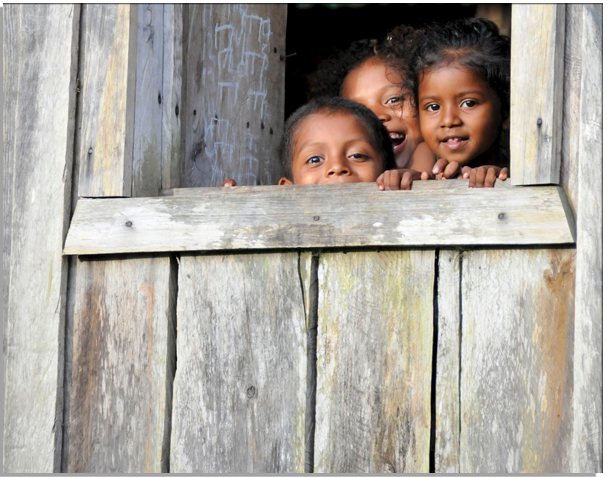 Despite important economic and social progress during the decade, however, the Americas did not overcome its status as the most unequal region in the world. As measured by the Gini index, income inequality improved a scant 6.5% over the decade (from 0.46 in 2000 to 0.43 in 2010). In 2010, the richest 20% of the Region’s population earned 49.6% of total income, while the poorest 20% earned only 5.6%.
Despite important economic and social progress during the decade, however, the Americas did not overcome its status as the most unequal region in the world. As measured by the Gini index, income inequality improved a scant 6.5% over the decade (from 0.46 in 2000 to 0.43 in 2010). In 2010, the richest 20% of the Region’s population earned 49.6% of total income, while the poorest 20% earned only 5.6%.
This inequality was also evident in key social determinants of health and development, including access to water and sanitation and exposure to environmental contaminants. Two particularly poignant examples of such inequality were Haiti’s cholera epidemic and the unexplained epidemic of renal failure in Central American countries, which claimed more than 18,000 lives during the decade, providing an alarming reminder of the potential effects of environmental risks on vulnerable groups, in this case predominantly rural families.
 The continuing inequities and vulnerabilities in poorer countries and population groups were also clear from the impact of numerous natural disasters that struck the Region during the decade. These disasters ranged from flooding and droughts that affected tens of thousands of rural Central Americans to the January 2010 earthquake in Haiti, which is estimated to have claimed over 200,000 lives. The catastrophic impact of Haiti’s 7.0-magnitude quake contrasted starkly with the lesser impact of the 8.8-magnitude quake and tsunami that struck Chile a few weeks later, in part due to Haiti’s greater vulnerability.
The continuing inequities and vulnerabilities in poorer countries and population groups were also clear from the impact of numerous natural disasters that struck the Region during the decade. These disasters ranged from flooding and droughts that affected tens of thousands of rural Central Americans to the January 2010 earthquake in Haiti, which is estimated to have claimed over 200,000 lives. The catastrophic impact of Haiti’s 7.0-magnitude quake contrasted starkly with the lesser impact of the 8.8-magnitude quake and tsunami that struck Chile a few weeks later, in part due to Haiti’s greater vulnerability.
For public health, two overarching demographic and epidemiological trends defined the decade: the Region’s aging population and the rising burden of chronic noncommunicable diseases (NCDs). Between 2000 and 2009, the number of people over age 60 increased from 92 million to almost 120 million. This increase created special challenges for health systems, which in most countries have proven under-equipped financially and organizationally to deal with the rapid rise in NCDs and other health aspects of aging. The trend has also increased pressures on families and particularly women, who provide most of the care for aging adults.  However, the impact has been greatest on the elderly themselves, many of whom suffer not only from age-related health problems but also from poverty and lack of social protection.
However, the impact has been greatest on the elderly themselves, many of whom suffer not only from age-related health problems but also from poverty and lack of social protection.
Other key trends that influenced health and social development included the Region’s continued and largely unplanned urbanization, international migration and internal displacement, and climate change, all of which increased exposure to health risks among vulnerable groups. Nevertheless, the Region on balance registered important gains in human development over the decade. The following section describes some of the important public health processes that contributed to these regional achievements.¹
Public Health Interventions and Achievements
 The 2000 Millennium Declaration and the subsequent Millennium Development Goals (MDGs) and targets confirmed a growing consensus at the global and regional levels that health is an essential component of economic and social development as well as of basic human well-being. In the Region of the Americas, this consensus was reflected in major new investments and initiatives and in the significant progress made toward public health goals during the decade.
The 2000 Millennium Declaration and the subsequent Millennium Development Goals (MDGs) and targets confirmed a growing consensus at the global and regional levels that health is an essential component of economic and social development as well as of basic human well-being. In the Region of the Americas, this consensus was reflected in major new investments and initiatives and in the significant progress made toward public health goals during the decade.
Overall public spending on health grew over the decade from US$ 212.8 billion (in 2000) to US$ 304.2 billion (in 2010), a 43% increase in constant dollar terms. (During the same period, private health spending declined 6.7%, from US$ 282.1 billion to US$ 263.1 billion.) Most of this increase occurred during the first half of the decade. From 2000 to 2005, public health spending increased 8.6% per year, well above economic growth, rising from 3.1% to 4.0% of gross domestic product (GDP). In contrast, during the second half of the decade, public health spending failed to keep pace with economic growth and declined from 4.0% to 3.7% as a percentage of GDP.
The increased spending on health in the early part of the decade was due in part to rising health care costs, but it also reflected countries’ renewed determination to address problems that health reforms in the late 1980s and 1990s had failed to resolve. These included fragmented health systems, large numbers of people without social and health care protection, as well as the closely related problems of poverty, social exclusion, and other social determinants of health inequality.
 In 2006, PAHO’s Member States began work on a regional approach to these challenges that would eventually culminate in one of the most important regional public health initiatives of the decade: the Health Agenda for the Americas 2008-2017. Developed through a broad consultation and consensus-building process, the agenda represents the highest-level political and strategic vision for health in the Americas. It is intended to provide guidance for collective action by all health stakeholders, including national health planners, technical cooperation agencies, and other health partners in the Region.
In 2006, PAHO’s Member States began work on a regional approach to these challenges that would eventually culminate in one of the most important regional public health initiatives of the decade: the Health Agenda for the Americas 2008-2017. Developed through a broad consultation and consensus-building process, the agenda represents the highest-level political and strategic vision for health in the Americas. It is intended to provide guidance for collective action by all health stakeholders, including national health planners, technical cooperation agencies, and other health partners in the Region.
The development of the agenda started in March 2006 and was led by a special working group made up of representatives of 10 countries (Argentina, Brazil, Chile, Costa Rica, El Salvador, Guyana, Panama, St. Vincent and the Grenadines, the United States of America, and Venezuela [Bolivarian Republic of]), with the Pan American Sanitary Bureau (PASB) serving as secretariat. During a year-long process, inputs were received from all the Region’s countries as well as from United Nations and other technical cooperation agencies, academic institutions, and nongovernmental organizations. The final document was launched in June 2007 before the 37th General Assembly of the Organization of American States (OAS) in Panama City, accompanied by a declaration signed by health authorities from all PAHO Member States.
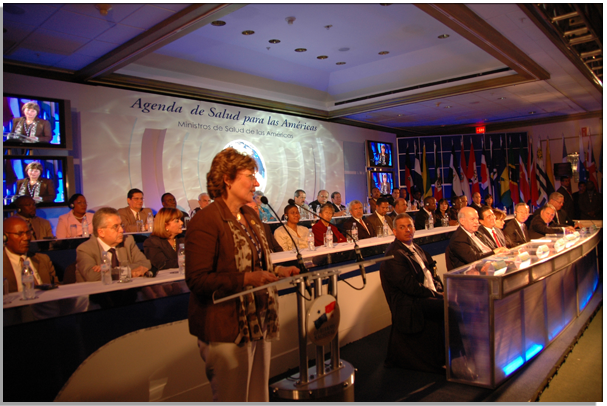 The Health Agenda for the Americas 2008-2017 is grounded in the shared principles of health as a human right, health equity, universality, access and inclusion, social participation, and Pan American solidarity. It presents a situation analysis that reflects a shared vision of the common public health challenges facing the Region’s countries and the actions that are needed to confront them. The agenda sets out seven key areas for action: strengthening national health authorities; tackling health determinants; increasing social protection and access to quality health services; diminishing health inequalities among and within countries; reducing the risk and burden of disease; strengthening the management and development of health workers; harnessing knowledge, science and technology; and strengthening health security.
The Health Agenda for the Americas 2008-2017 is grounded in the shared principles of health as a human right, health equity, universality, access and inclusion, social participation, and Pan American solidarity. It presents a situation analysis that reflects a shared vision of the common public health challenges facing the Region’s countries and the actions that are needed to confront them. The agenda sets out seven key areas for action: strengthening national health authorities; tackling health determinants; increasing social protection and access to quality health services; diminishing health inequalities among and within countries; reducing the risk and burden of disease; strengthening the management and development of health workers; harnessing knowledge, science and technology; and strengthening health security.
One of the most important regional processes contributing to the Region’s advances toward the MDGs and the goals of the Health Agenda for the Americas was the expansion of social protection, in health as well as in such critical social determinants of health as income security and access to essential services, in line with the U.N. Social Protection Floor initiative.
World Conference on Social Determinants of HealthOne of the most important achievements of global health advocacy during the first decade of the 2000s was a higher political profile for the social determinants of health (SDH). The 2008 Final Report of the Commission on Social Determinants of Health: Closing the Gap in a Generation demonstrated successfully that social determinants—where people are born, grow, live, work, and age, and their access to health services—are the major factors underlying inequities in health status among people around the world.
In preparation for the conference, PAHO organized three consultations aimed at formulating regional recommendations, including a meeting of Member States, a virtual consultation with 300 civil society organizations (followed by a smaller face-to-face meeting to synthesize its results), and a virtual consultation with members of the PAHO Equity, Health, and Human Development listserv aimed at reaching additional stakeholders. The recommendations that emerged from these consultations were documented and widely distributed. A highlight of the world conference, which drew more than 1,000 people plus 19,000 virtual participants, was the presentation of seven case studies from the Americas illustrating the systematic and practical aspects of implementing the SDH approach at the country level. The Rio Political Declaration on Social Determinants of Health was subsequently endorsed by WHO’s 65th World Health Assembly, along with measures to support its five priority areas of action: governance to tackle the root causes of health inequities, promotion of participation and community leadership, the role of the health sector in reducing inequities, action among global partners and stakeholders, and monitoring of progress. In June 2012, the United Nations Conference on Sustainable Development (Rio+20) further reinforced the SDH approach in calling for “action on the social and environmental determinants of health, both for the poor and the vulnerable and the entire population...to create inclusive, equitable, economically productive, and healthy societies.” |
During the first decade of the 2000s, average public health spending in Latin America and the Caribbean peaked at 4.1% of GDP in 2008-2009, and health spending in individual countries was in many cases significantly lower during the decade. The World Health Report 2010, Health systems financing: the path to universal coverage, presents evidence that no country has reached universal health coverage with public health spending of less than 5-6% of GDP. Nevertheless, a number of countries expanded health coverage by increasing the proportion of the population covered or the level of services offered, by reducing out-of-pocket costs for individuals and families, or a combination of all three.
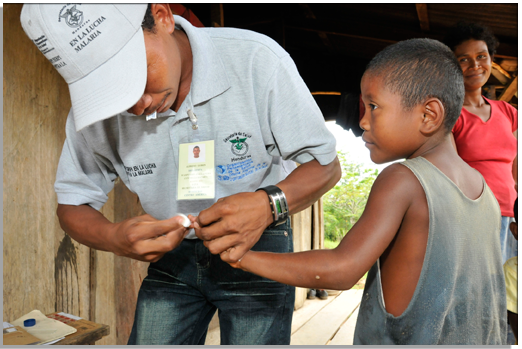 Brazil’s Sistema Único de Saúde (“Unified Health System”) was originally created in 1988 and had expanded to cover 80% of the country’s nearly 200 million inhabitants by the end of the decade. Mexico’s voluntary public plan, Seguro Popular (“Popular Insurance”), established in 2004, was able by the end of the decade to reach some 50 million people in 32 states who were not covered by other social security institutions. Chile’s Régimen de Garantías Explícitas en Salud (AUGE) (“Universal Access with Explicit Guarantees”) program, established in 2005, strengthened the country’s already existing universal health care system by providing guaranteed coverage within specific timeframes for 70 high-burden health conditions. Uruguay’s Sistema Nacional Integrado de Salud (“National Integrated Health System”), created in 2007, increased the quality and sustainability of the country’s universal health care system through financing reforms, a guaranteed package of services, and improved distribution of beneficiaries between private and public providers, regardless of capacity to pay. In the United States, the Patient Protection and Affordable Care Act of 2010 seeks to progressively expand health insurance coverage while also improving health care delivery and reducing costs, and represents the most significant U.S. health reform effort since the 1960s.
Brazil’s Sistema Único de Saúde (“Unified Health System”) was originally created in 1988 and had expanded to cover 80% of the country’s nearly 200 million inhabitants by the end of the decade. Mexico’s voluntary public plan, Seguro Popular (“Popular Insurance”), established in 2004, was able by the end of the decade to reach some 50 million people in 32 states who were not covered by other social security institutions. Chile’s Régimen de Garantías Explícitas en Salud (AUGE) (“Universal Access with Explicit Guarantees”) program, established in 2005, strengthened the country’s already existing universal health care system by providing guaranteed coverage within specific timeframes for 70 high-burden health conditions. Uruguay’s Sistema Nacional Integrado de Salud (“National Integrated Health System”), created in 2007, increased the quality and sustainability of the country’s universal health care system through financing reforms, a guaranteed package of services, and improved distribution of beneficiaries between private and public providers, regardless of capacity to pay. In the United States, the Patient Protection and Affordable Care Act of 2010 seeks to progressively expand health insurance coverage while also improving health care delivery and reducing costs, and represents the most significant U.S. health reform effort since the 1960s.
Health care coverage also expanded as part of a growing number of targeted anti-poverty programs that required beneficiaries to receive health interventions as conditions for cash transfers. By the end of the decade, some 3.1 million families in Brazil were receiving health and other benefits from the Bolsa Familia (“Family Breadbasket”) program, while some 5.8 million families were benefitting from Mexico’s Oportunidades (“Opportunities”) program, and 1.1 million people were benefitting from Chile Solidario (“Solidary Chile”). Other countries—including Colombia, Ecuador, and Peru—initiated important efforts to advance the national debate about universal health coverage.
Governments’ growing emphasis on meeting health and social development commitments also led to the increasing use of legislation, budgetary authority, and constitutional law to reform health and social protection systems and to expand government action into areas related to the social determinants of health. Continuing a process that began in the 1990s, Bolivia, the Dominican Republic, and Ecuador were among countries that adopted new constitutions that explicitly guarantee the right to health and include mandates for legal reforms that strengthen the steering role of the national health authority and increase participation, transparency, and accountability in the health sector.
 In addition to these constitutional provisions, other countries developed new legal frameworks for the health sector, including legislation to create new or consolidate existing regulatory agencies. Argentina, Guatemala, and Panama were among countries that drafted new national health laws and launched national dialogues on the proposed legislation led by national health authorities and parliamentary health commissions. Panama’s proposed legislation seeks to create a new drug regulatory authority, while the Dominican Republic proposes to create a new agency to manage public sector health services. Paraguay is considering proposed new regulations to guide the implementation of its 1996 law (No. 2.319) establishing the functions and competencies of the national health authority.
In addition to these constitutional provisions, other countries developed new legal frameworks for the health sector, including legislation to create new or consolidate existing regulatory agencies. Argentina, Guatemala, and Panama were among countries that drafted new national health laws and launched national dialogues on the proposed legislation led by national health authorities and parliamentary health commissions. Panama’s proposed legislation seeks to create a new drug regulatory authority, while the Dominican Republic proposes to create a new agency to manage public sector health services. Paraguay is considering proposed new regulations to guide the implementation of its 1996 law (No. 2.319) establishing the functions and competencies of the national health authority.
Related to these developments was the growing use of international treaties and other accords as instruments for collective action to protect population health from common threats. The most important of these was the WHO Framework Convention on Tobacco Control (FCTC), adopted by the World Health Assembly in 2003 as the world’s first international treaty related to health. By 2012, 29 of 35 countries in the Americas were parties to the treaty, including most recently seven countries—Bahamas, Colombia, Costa Rica, Nicaragua, St. Kitts and Nevis, St. Vincent and the Grenadines, and Suriname—all of which ratified the treaty during the past five years.
During 2008 to 2012, a number of the Region’s countries made significant progress in implementing the FCTC. Twelve passed new laws banning smoking in public indoor spaces and workplaces, joining Uruguay, which was the Region’s first country to implement such a ban in 2005. By 2012, Canada had smoke-free laws in place at the subnational level that effectively protected 90% of the population. In addition, 14 countries passed legislation on packaging and labeling of tobacco products, most of which was consistent with FCTC provisions on the size of health warnings, the use of graphic warnings, and prohibitions on the use of misleading terms (e.g., “light” cigarettes). These were achieved despite aggressive efforts by the tobacco industry to undermine progress in tobacco control.
In 2011, PAHO/WHO Member States endorsed similar measures targeting alcohol as part of the regional Plan of Action to Reduce the Harmful Use of Alcohol (CD51.R14). The plan proposes measures including increased taxes on alcoholic beverages; restrictions on age, type of outlets, and hours for the sale and purchase of alcohol; and limits on marketing, particularly aimed at young people. As with tobacco, the alcohol industry has responded with active efforts to prevent the implementation of such measures.
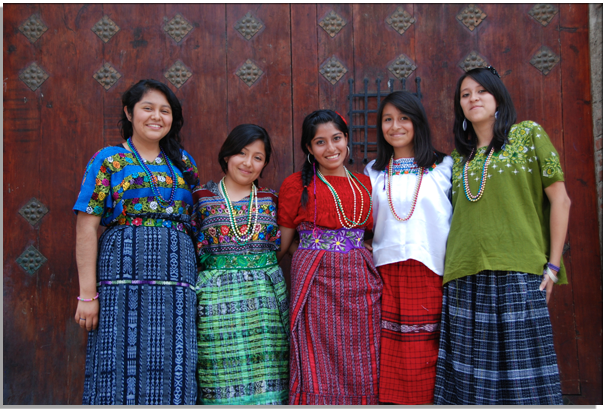 In line with these efforts and contributing to expanded health coverage was a growing, if incipient, emphasis on public health action based on human rights, gender equality, and cultural diversity. In all the Region’s countries, these issues were the subject of new legislation, policies, or mechanisms designed to protect and promote “health for all.” Particularly noteworthy were efforts among and within countries to define multisector state and civil society responses to complex public health inequalities and challenges, including violence against women, access to HIV treatment and care, gender identity, and reproductive and sexual rights.
In line with these efforts and contributing to expanded health coverage was a growing, if incipient, emphasis on public health action based on human rights, gender equality, and cultural diversity. In all the Region’s countries, these issues were the subject of new legislation, policies, or mechanisms designed to protect and promote “health for all.” Particularly noteworthy were efforts among and within countries to define multisector state and civil society responses to complex public health inequalities and challenges, including violence against women, access to HIV treatment and care, gender identity, and reproductive and sexual rights.
These efforts led to such achievements as new gender equality policies in the health sector, mental health reforms that incorporate human rights protections, the decriminalization of sexual orientation behaviors, criminalization of violence against women, the creation of intercultural ministries or high-level offices within governments, subregional commitments on gender and ethnic equality in health, and the establishment of technical governmental groups to advocate for health equity in regional, subregional, and national health agendas. Many of these processes embraced universal or regional treaties, conventions, or resolutions that commit countries to protecting health and human rights.
The Region’s determination to address the growing epidemic of NCDs mounted over the decade and was reflected in a number of new regional initiatives and commitments. These ranged from the above-mentioned efforts to implement the FCTC to first ladies’ initiatives targeting childhood obesity—for example, “Let’s Move!” in the United States and “Choose to Live Healthy” in Chile—and laws and regulations on marketing of foods to children and serving junk foods in schoolssuch as in Chile, Costa Rica, and Mexico.
The Caribbean was a regional leader in these efforts, holding the first Regional Summit on Chronic Non-communicable Diseases in Trinidad and Tobago in 2007. The final Declaration of Port-of-Spain: “Uniting to Stop the Epidemic of Chronic NCDs” pushed chronic diseases to the top of the Caribbean health agenda and pledged a series of policies and actions based on a multisectoral, “all-of-society” framework. These included health education and health promotion initiatives, expanded programs for NCD screening and management, incentives and resources to improve nutrition and increase physical activity in schools and other settings, full implementation of the FCTC, mandates for labeling of the nutritional content of foods, and agricultural and trade policies that promote indigenous products and counteract the negative effects of globalization on the food supply.
 In 2010, Caribbean countries sponsored a resolution at the U.N. General Assembly calling for a high-level meeting to raise awareness of the burden of NCDs around the world and to spur new commitments to tackling the problem. The U.N. High-Level Meeting on Chronic Non-communicable Diseases took place in New York on 19-20 September 2011 and was only the second such U.N. meeting focused on health, after the 2001 special session on the HIV/AIDS epidemic. The final declaration echoed the Port-of-Spain agreement in calling for multisectoral policies and actions to address NCDs and their risk factors and in urging implementation of WHO’s global strategies on diet, physical activity, and health and as well as accelerated implementation of the FCTC.
In 2010, Caribbean countries sponsored a resolution at the U.N. General Assembly calling for a high-level meeting to raise awareness of the burden of NCDs around the world and to spur new commitments to tackling the problem. The U.N. High-Level Meeting on Chronic Non-communicable Diseases took place in New York on 19-20 September 2011 and was only the second such U.N. meeting focused on health, after the 2001 special session on the HIV/AIDS epidemic. The final declaration echoed the Port-of-Spain agreement in calling for multisectoral policies and actions to address NCDs and their risk factors and in urging implementation of WHO’s global strategies on diet, physical activity, and health and as well as accelerated implementation of the FCTC.
The Region’s aging population and the related rise of chronic noncommunicable diseases have created new challenges for health systems but have not eliminated the need to face longer-standing problems such as infectious diseases and diseases related to poverty. In some countries, such as Bolivia, Guatemala, and Paraguay, communicable diseases continue to contribute most to the overall burden of disease. Other countries face a “double” (or even “triple”) epidemiological burden in which infectious diseases continue to account for a significant share of illnesses and deaths while chronic diseases are rapidly increasing, and external causes, particularly injuries and violence, also contribute a large share to the burden of illness.
While other developing regions face similar epidemiological landscapes, Latin America and the Caribbean have surpassed other regions in one key regard: reducing the burden of vaccine-preventable diseases. As of 2010, basic vaccination coverage averaged over 92% among children under age 1 in the Americas. Thanks to these high coverage rates, the Region was able to consolidate such important achievements as the elimination of endemic measles and rubella (both in process of verification) and the lowest child mortality rates of any developing region. In addition, nearly all the countries have eliminated neonatal tetanus as a public health problem. The exception, Haiti, made history in early 2012 with intensified immunization efforts that reached some 3 million children with vaccines against polio, measles, and rubella, achieving coverage of over 98% for all age groups. Introduction of the pentavalent vaccine was scheduled to take place in Haiti by the end of September 2012.
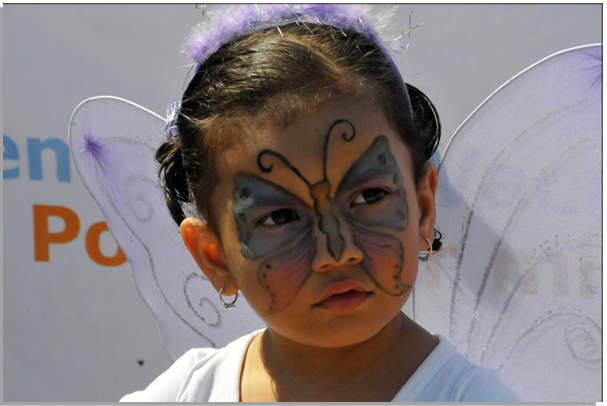 In addition to progress against vaccine-preventable diseases, the Region also made important inroads against a number of so-called neglected diseases and diseases of poverty. By the end of the decade, every country of the Region except Brazil had eliminated leprosy at the national level (with less than 1 case per 10,000 inhabitants), and the 21 countries with endemic Chagas disease had interrupted domestic vector transmission. As of 2007, the Region had eliminated blindness due to onchocerciasis, and transmission of the disease was interrupted or eliminated in various foci in Colombia, Ecuador, Guatemala, Mexico, and Venezuela. By 2011, Costa Rica, Suriname, and Trinidad and Tobago had interrupted transmission of lymphatic filariasis. However, the disease remained a problem in Brazil, the Dominican Republic, Guyana, and Haiti. Other diseases of poverty that remained problems in the Region included geohelminth infections, tracoma, schistosomiasis, leptospirosis, and leishmaniasis, the latter being one of the few infectious diseases to increase during the decade.
In addition to progress against vaccine-preventable diseases, the Region also made important inroads against a number of so-called neglected diseases and diseases of poverty. By the end of the decade, every country of the Region except Brazil had eliminated leprosy at the national level (with less than 1 case per 10,000 inhabitants), and the 21 countries with endemic Chagas disease had interrupted domestic vector transmission. As of 2007, the Region had eliminated blindness due to onchocerciasis, and transmission of the disease was interrupted or eliminated in various foci in Colombia, Ecuador, Guatemala, Mexico, and Venezuela. By 2011, Costa Rica, Suriname, and Trinidad and Tobago had interrupted transmission of lymphatic filariasis. However, the disease remained a problem in Brazil, the Dominican Republic, Guyana, and Haiti. Other diseases of poverty that remained problems in the Region included geohelminth infections, tracoma, schistosomiasis, leptospirosis, and leishmaniasis, the latter being one of the few infectious diseases to increase during the decade.
The adoption of the new International Health Regulations (IHR) in 2005 marked a key public health milestone at the global level and also in the Americas, and gave rise to a process of strengthening epidemiological alert and response capacities that is ongoing. PAHO/WHO’s technical cooperation programs supported this and other key public health processes and achievements during the decade. Chapter II provides highlights of this work.
Back to top





